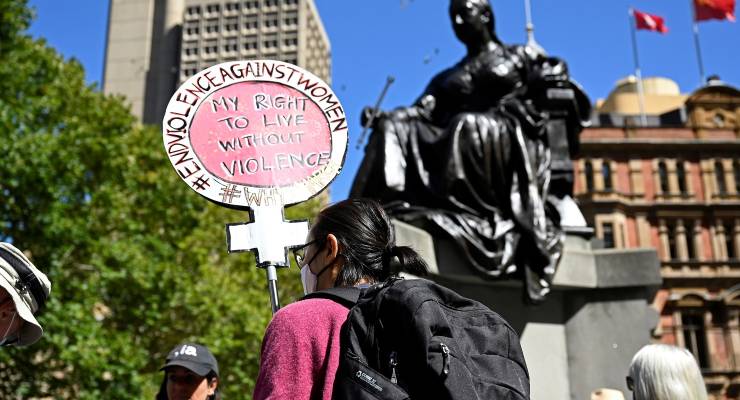
The Albanese government has announced $14.7 million dollars in funding to improve criminal justice responses to sexual violence. The resourcing — which includes funds to establish an Australian Law Reform Commission inquiry into justice responses to sexual violence — was paired with a commitment to “continue to listen” to survivors.
This is an opportunity to demonstrate leadership, for there is only so much individuals can achieve in the face of institutional power until those institutions change — or are compelled to. This is where governments, with the mandate of the community they represent, can ensure that the interests of that community are taken seriously.
When it comes to the criminal justice system, this is particularly important because, so often, that institution labours under a misapprehension that things are done right simply because they have always been done that way.
This chance for reform, and the inevitable resistance to change that we will see from some quarters of the justice system, reminds me of the child sexual abuse royal commission. In one of their reports, the commission interrogated assumptions about how juries deliberate, which underpinned a long-standing evidentiary rule — a rule the commission found was failing to provide adequate justice for victims. Of those assumptions, the commission said: “[they] have been stated repeatedly for so long, and in such strong terms that it may seem difficult to question them. They may take on the air of incontrovertible truth.”
This could be said of so many other assumptions maintained by the criminal justice system: an institution that, when it comes to sexual violence, assumes much and understands little. This is in no small part because the justice system was designed a long time ago, by and for those members of our community who were statistically more likely to perpetrate sexual violence (overwhelmingly, sexual violence is perpetrated by men), who got to define what it is (narrowly) and deem when it is believable (also narrowly).
The consequences of this continue to echo today in a system that still does not accommodate the reality of sexual violence. For example, the myriad ways sexual violence takes place, is reacted to, is remembered, will be doubted by some and recognised by others. That someone may take some time to reckon with what happened to them and to report it to anyone; that they consensually engage in sexual activity with someone who previously sexually assaulted them; that they cannot remember the precise order of events surrounding their assault — these features of sexual violence are prolific, as my decade of experience in criminal practice showed me. Yet, whereas many understand them entirely, some still view these as hallmarks of doubt.
It is not sacrilege to challenge the assumptions that underpin tenets of the justice system, to suggest that it doesn’t always get it right. The criminal justice system was always meant to be a balancing of interests: those of the accused and those of the community, including victims. Its own symbol is a woman in a blindfold holding a set of scales. To remain vigilant that we have the balance right, and to hear those who say they are failed and broken by the system, that they do not feel their interests are being weighed in the balance, is not antithetical to Lady Justice.
This institution is meant to serve us all, and that requires good-faith inquiry as to how we can improve the balance, in a way that need not erode fundamental rights like the presumption of innocence and the standard of proof.
Just how these issues will be addressed through law reform remains to be seen, but it demands nuance, creativity, breadth and, naturally, caution — the stakes are high after all. There will be no single solution: jury directions, judicial education, evidentiary rules and legal principles all merit examination.
Above all, the values, attitudes and misguided beliefs about sexual violence that find their way into the courtroom — in the witness box, in the dock, at the bar table, on the bench and in the jury room — must be worked on. That will take a community effort that, if we get it right, will help drive down rates of sexual violence, preventing it from happening in the first place.
This funding presents an opportunity for institutional humility and accountability, one we cannot afford to miss.
If you or someone you know is affected by sexual assault or violence, call 1800RESPECT on 1800 737 732 or visit 1800RESPECT.org.au. In an emergency, call 000.
How can Australia’s justice system improve its attitudes towards sexual violence? Let us know your thoughts by writing to letters@crikey.com.au. Please include your full name to be considered for publication. We reserve the right to edit for length and clarity.








I’ve been watching Asking For It on SBS. It’s some grim viewing, but it makes the point that our justice system simply doesn’t have the right model to deal with sexual violence. Who the hell would report a rape in Australia? The chances of the offender being charged and found guilty are less than one percent, and during the trial the defence gets to psychologically rape the victim all over again. This chunk of the budget should go on examining how other countries tackle the problem more successfully, and how this can apply to our grotesquely uneven adversarial system.
As a former Jury member I would say the doings in the jury room are quite problematic. After days of evidence each juror makes up their mind based on their prejudices and then cherry picks bits that they remember to justify their choice. It is very hit and miss. I suspect we really need professionally trained jurors for these trials.